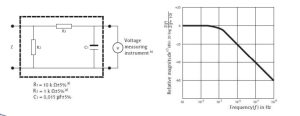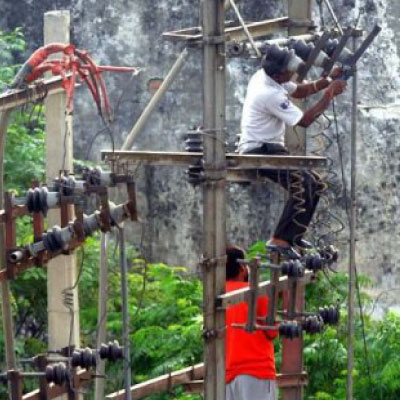Electrical Safety
Home » Electrical Safety

Hazarda of Electricity?
Potential Risks to Patient
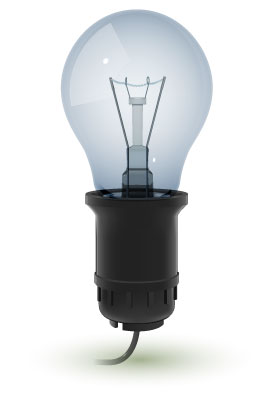
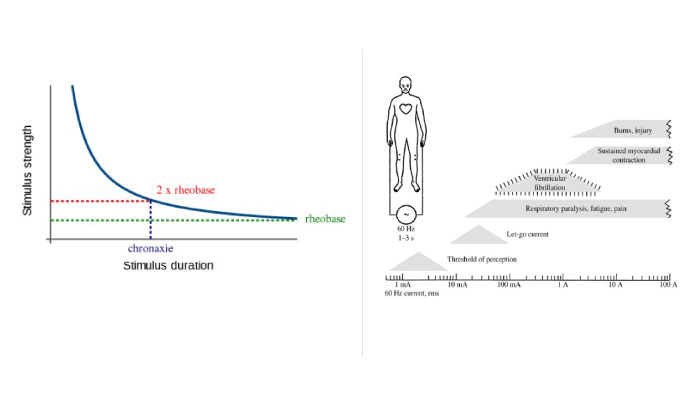
Physiological Effects of Electricity
Physiological effects of electricity. Threshold or estimated mean values are given for each effect in a 70 kg human for a 1 to 3 s exposure to 60 Hz current applied via copper wires grasped by the hands.
Physiological Effects of Electricity
- Threshold of perception: The minimal current that an individual can detect. For AC (with wet hands) can be as small as 0.5 mA at 60 Hz. For DC, 2 ~10 mA
- Let-go current: The maximal current at which the subject can voluntarily withdraw. 6 ~ 100 mA, at which involuntary muscle contractions, reflex withdrawals, secondary physical effects (falling, hitting head) may also occur
- Respiratory Paralysis / Pain / Fatigue At as low as 20 mA, involuntary contractions of
respiratory muscles can cause asphyxiation / respiratory arrest, if the current is not interrupted. Strong involuntary contraction of other muscles can cause pain and fatigue - Ventricular fibrillation 75 ~ 400 mA can cause heart muscles to contract uncontrollably, altering the normal propagation of the electrical activity of the heart. HR can raise up to 300 bpm, rapid, disorganized and too high to pump any meaningful amount of blood ventricular fibrillation. Normal rhythm can only return using a defibrillator
- Sustained myocardial contraction / Burns and physical injury At 1 ~6 A, the
entire heart muscle contracts and heart stops beating. This will not cause irreversible tissue damage, however, as normal rhythm will return once the current is removed. At or after 10A, however, burns can occur, particularly at points of entry and exit.
Objective
To ensure that Patients or care givers never Serve as a Current Path due to faulty Insulation, earthing or equipment malfunction.







Leakage Currents
Direct Leakage
Current flowing in the protective earth.
Differential Leakage
Leakage resulting from imbalance between currents in line and neutral.
Alternative Leakage
Current flowing through a person via applied part or enclosure by applying unintended voltage from an external source
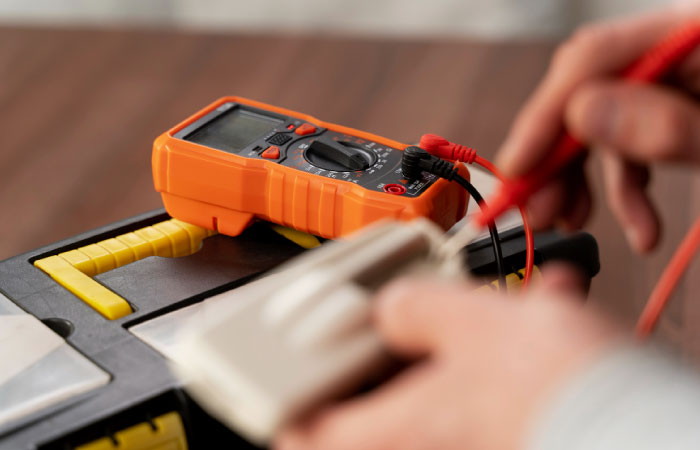
Electricity Safety Tests
- Earth leakage – Leakage current from equipment to earth
- Enclosure Leakage Tests –Chasis to earth
- Patient Leakage Tests – applied part to earth via patient
- Auxillary Leakage Tests – between applied parts via patient
Test the insulation/dielectric strength between power and protective earth.
Typically more than 50 M Ω, tested with 500VDC Exception: equipment with mineral insulated heater elements may give measurement of ≅ 1MΩ
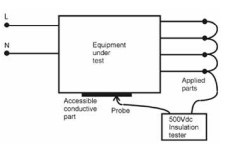
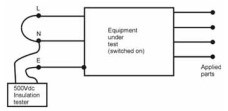
Tests the integrity of the low resistance connection between protective earth and conductive parts on chassis
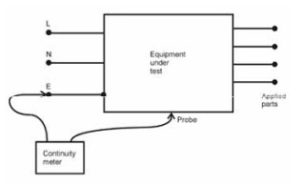
Tests current in protective earth in normal, reverse and single fault condition
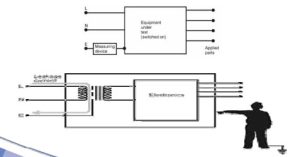
Tests measures the leakage from enclosure and mains parts combined to real earth., in
normal, reverse and single fault conditions
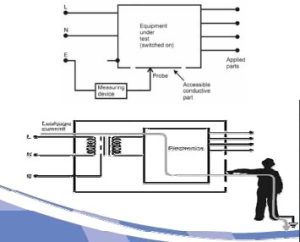
Tests total leakage from the combined applied parts to earth under normal, reverse and single fault conditions.
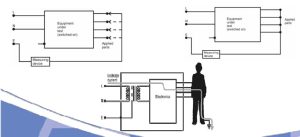
Tests current through patient to protective earth when external source is applied.
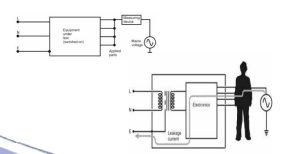
Used as body equivalent in electrical leakage current measurement for EUT
